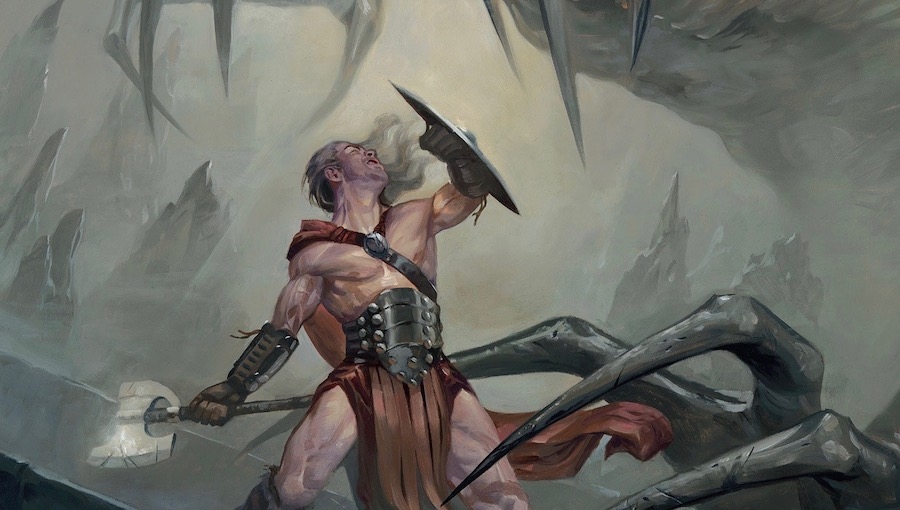While DC Comics (including their Black Label imprint) has long been known as the home of capes and cowls, the original and impressive dark high fantasy series, The Last God, is set to change all that with a resounding and triumphant THUD of its mighty battle axe. Written by Phillip Kennedy Johnson (Warlords of Appalachia, Jim Henson’s The Power of the Dark Crystal) and featuring the haunting and beautiful artwork of Riccardo Federici (Aquaman, The Batman Who Laughs), The Last God offers a new, exciting, and epic story to follow among the current comic book shop shelves stocked full of superheroes and sci-fi!
SPOILERS BELOW
The first issue of The Last God sets the stage for this broody fantasy saga, explaining how – years ago – a band of heroes (a fellowship, even) known as the “Godslayers” with members from across the lands joined forces to take arms against the vicious and deadly Plague of Flowers that threatened all. Having climbed the black stairs and defeated the evil, the “Godslayers” have ruled and been honored by all in the many decades that have passed since their noble and heroic deeds. But, as the pop culture titan Game of Thrones has recently taught many a fantasy genre fan, sometimes, our “great heroes” are less heroic than anticipated, and history is almost always written by the winners, whether noble intentions are intact or lacking.
If you’ve read Johnson’s work before, you know he’s not afraid to dive into heady concepts, moral ambiguities, and blunt and brutal conflict, all while still fostering the humanity present at the heart of a story. All of that is at work in The Last God. Blending the mysticism of Tolkien with the grounded, realistic, and violent tone present in George R.R. Martin’s A Song of Ice and Fire, Johnson’s first issue of The Last God features strong themes of uncovering and answering the sins of the past, as well as the dangers of idolization and hero worship. These thematic elements make the story more relevant than ever, while Johnson (who also has a background as a professional musician) employs in-universe, Watchmen-esque appendices, maps, and sheet music at the end of each issue to further enrich the dense history and culture of the world seen in The Last God.

When it comes to artwork in the book, Johnson himself has been heard to say that Federici’s contributions are better than the comic medium deserves. That statement is no negative against the medium, because it’s truly hard to imagine not being in utter awe of Federici’s talents. Combined with the lush, yet lived in, colors of Tom Napolitano, the art of The Last God feels like the inspired imaginations of a 1980s teenager who’s being staring at the painted cover of their Dungeons & Dragons manual during the bus ride to school. Whether depicting the architecture, the medieval combat, or the terrifying and unforgettable plague of flowers and the flowering dead, this is one book where the art alone should easily be enough to encourage jaded readers to give it a shot.
FINAL VERDICT: The Last God #1 is, frankly, like nothing else in comic shops today. Do yourself a favor and wipe away those tears for that cancelled Game of Thrones prequel series from HBO and jump on board The Last God to get your fantasy fix.

Creative Team: Phillip Kennedy Johnson (writer), Riccardo Federici (artist), Dean White (colorist), Tom Napolitano (Letterer)
Publisher: DC Comics – Black Label
The Last God #1 is currently available for purchase at your local comic book retailer, so get out there and be to pre-order the upcoming issues while you’re at at!
Also, for more on The Last God and the inspiration behind it, be sure to check out the Fanbase Feature podcast interview that was conducted with comic writer and The Last God creator Phillip Kennedy Johnson – available on iTunes of here on the Fanbase Press website.

